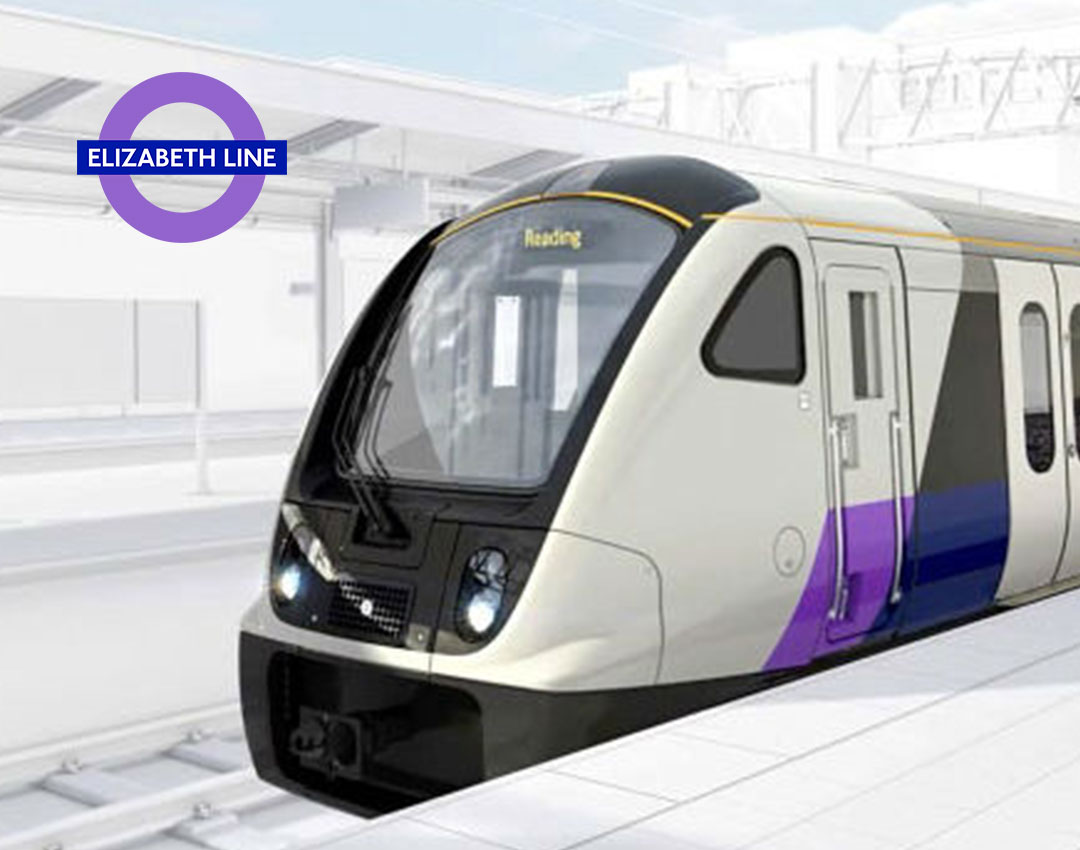Published in Computing, June 2022
Interview with Richard Blanford, CEO and founder, Fordway
Over 12 years, IT at the project formerly known as Crossrail went from cables and servers to cloud and wearables. Richard Blanford, CEO at project MSP Fordway, explains how that changed the workflow.
Building the Elizabeth Line was one of the largest feats of engineering ever to take place in a modern city. Thirteen miles of tunnel and 7 million tons of earth were excavated from beneath London over more than a decade. It was complex, wide-ranging and mobile – and it needed IT to match.
Managing the site was a project like no other, says Richard Blanford, CEO of Fordway: the MSP responsible for delivering infrastructure across the project for more than 10 years.
“Our contract was to cover the consortium that did pretty much all the western side of Crossrail. So that was the western tunnels, Paddington, Russell Square; in fact, everything up to and including Finsbury and Farringdon, which was effectively where the two tunnelling machines met… Our IT supported the building and facilitation of all that side of the Crossrail project.”
Full speed ahead
At the peak, Fordway was supporting about 1,300 IT users: a combination of staff from each of the three main consortium members (BAM Nuttall, Ferrovial and Kier), plus specialist subcontractors.
In this context, ‘support’ means a bit more than, “Here’s a laptop.”
“We had about 40 different office location moves throughout the project, where we literally picked up the entire administration of the project and moved it to different places. We also did various other things, like doing real time sensors and data analysis of the tunnelling machine, [which was] 400 feet below the ground at certain places.
“The boring machine itself was 650 or 700 feet long, filled with sensors, which we were monitoring in real time. If for whatever reason they lost connectivity with the surface, if there was silence for 15 minutes, they had to pull the crew out and stop the machine. Every time they did that they obviously lost time, but it cost them a million quid to restart it.”
Making sure the machines kept moving forward – at between 20 and 40 yards a day – was obviously crucial to a project that amounted to one long tunnel, but Fordway had plenty more going on at the same time. The company delivered everything from standard office automation to building information management systems, 3D modelling capabilities, wireless networks and 24/7 support, plus looking after all the equipment on-site: equipment that became more complex as time went on.
Nothing is permanent – except change
“If you consider the start of the project [in 2010], the iPad was almost brand new and shiny, and no one’s ever heard of it. By the end of the project, everybody was wandering around with a smart tablet, sensors, wearable devices, even body cams in certain circumstances. So we had to evolve the technology through the life of the project to cope with all the elements that started coming in.”
Fordway had to allow for the inevitable technology changes and upgrades through the life of the contract. The company held monthly service reviews with the consortium members, as well as quarterly relationship reviews and biannual strategy reviews. Stakeholders could review new tech and requirements at any of these.
One of the major IT changes – several times through the project’s life – was moving to a new version of Windows. Crossrail began so long ago that everyone was still on XP; Windows 7 didn’t launch until late 2009, and to ensure everything still worked properly post-update Fordway didn’t change everyone over to the new OS until “a year, maybe 18 months” in. The same applied to Windows 10, which launched in 2015 but wasn’t adopted inside Crossrail until 2016 or 2017. The consortium skipped Vista and Windows 8, both notoriously poor for enterprise users.
“To be honest we didn’t need to go to Eight, and Eight was more of a skin… It was such a different way of looking at a PC and using it that everyone went ‘Err…’ and we decided not to do that.”
Ultimately, one of the biggest and most interesting challenges came in the amount of embedded and wearable technology that began to appear on-site in the latter half of the contract. Fordway had to work out how to integrate and monitor these devices almost in real-time.
“It was very much as new bits [of the project] opened up, new technology kept being thrown at us and saying, ‘We’ve got to be able to incorporate this, we’ve got to be able to incorporate that, how do we look after that, how do you suggest we do this?'”
Key to connecting these devices were reliable, scalable wireless networks. At the project’s launch connectivity had mostly been through ethernet cables to desktops, but by the end of the first device refresh cycle the IT mobility needed had convinced Fordway to move entirely to wireless and laptops.
“Wireless became the predominant connectivity in probably about 2015 or 2016. We stopped putting cables into new offices, we just put wireless overlays in everywhere. We got a comms into the office, and then we always had 4G and bonded 4G as the absolute Get Out of Jail Free card. If we could do nothing else, we put a 4G SIM into something if we needed to talk to it.”
Fordway upgraded the wireless network at least three times and had to install special antennae to get it working properly in some areas. Of course, being in (technically beneath) central London made 4G a convenient tool, but even that wasn’t always viable: the heavy plant machinery and metres of packed soil, clay and chalk often blocked signals, so as a worst-case answer the company made sure devices could work offline and upload data when staff got back to a reliable connection.
Transformational clouds
New versions of Windows and changing hardware were expected: technology always evolves over time. But the early Tens had one massive step-change that would rewrite how enterprise tech worked forever.
“Historically [in these types of contracts], one of the partners has generally provided the IT and the IT service in the consortium… We said, frankly, that doesn’t make an awful lot of sense, because in this world of cloud computing and cloud services, you don’t have to do that; we can create dedicated environments for projects, which mean you don’t have to have servers on-site, for example.
“Building sites and construction sites are notoriously insecure environments. People walk in and knick heavy plant, computers, you name it, anything that isn’t nailed down. Site staff generally aren’t the most considerate and you don’t have beautiful, air-conditioned datacentres and stuff.”
The cloud meant massive changes for Crossrail, but all for the better. Not only did changing to off-site servers mean fewer concerns about theft and damage; but moving locations, while still irritating, was not the complex, overwhelming, time-consuming headache that it would have been in the mid-2000s.
“I think that’s one of the key things that technology has created: it’s much simpler to get things moving fast now, with templates, standardisation, readily available cloud resources that you literally just enable; whereas that capability didn’t exist back in 2010. We literally had to carve it out.”
The end of the (Elizabeth) Line
After 12 years, Fordway – along with the other contractors, consortium members and partners who worked on it – celebrated the opening of the Elizabeth Line this May, but had been winding down its involvement before that.
“The main construction work for us really finished in about 2018/2019, and that’s when the numbers went down quite substantially… The building stuff, the heavy stuff, the concrete pouring and steel fixing and all that had been done. It was much more the technical people, the railway people, the signalling people who were coming in, but there were small numbers of them and most of them came with their own tech, so they weren’t so much part of the construction side; they were the specialist contractors.
“We supplied IT for the guys who laid the tracks, but when the signalling contract came in that wasn’t inside the scope of what we were asked to do, because they had their own specialist services. They just had to have an email account and the ability to communicate with the project.”
From a peak of 1,300 users, Fordway is now supporting just 40, and the end of the project is in sight. Blanford and his team are preparing to hand a copy of the data they’ve collected over the last decade – about 15 terabytes – to each member of the BAM/Ferrovial/Kier consortium. Even that will be easier than it would have been in 2010.
“When we archived one of the older early projects, we would get some big, portable hard drives and copy the data onto that. These days, we just copy it up to a bit of cloud storage.”
Written by Tom Allen, Computing





